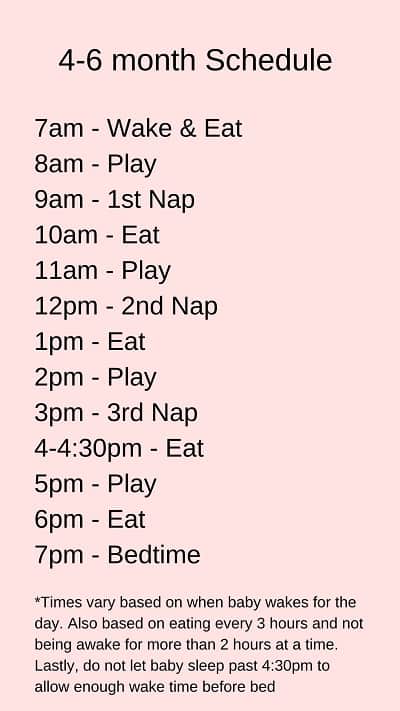Ultimate Guide to Sleep Training Your 4-Month-Old: Gentle Methods for Better Nights
Hey there, super parents! ? Are you ready to embark on the dreamy journey of sleep training your adorable 4-month-old? Wonderful! You’ve fluttered to the right spot. In this guide, we’ll nestle together through the gentle pathways of teaching your little cherub how to catch those Zzz’s independently.
As a loving guardian, you know sleep is as essential to your baby’s growth as it is to your sanity. So, let’s tiptoe into the peaceful realm of sleep training, where we embrace patience, consistency, and loads of snuggles. It’s time to transform those restless nights into sweet slumber parties!
Understanding Your 4-Month-Old’s Sleep
Before we dive into the cloud-soft strategies of sleep training, let’s first understand the magical world of a 4-month-old’s sleep patterns. At this delightful age, your baby’s sleep starts to mature, with longer stretches of nighttime sleep and more predictable naps.
? Night-time Sleep: Babies generally need between 12-16 hours of sleep a day, and around this milestone, they might start to snooze for 6–8 hour stretches at night. It’s like the stars align for a longer journey to the dreamland!
? Day-time Naps: Your munchkin will likely cherish about 3-4 naps a day. These are essential pit stops for growth and development, so ensure they’re as restful as possible.
? Sleep Regressions: Ah, the not-so-merry topic of sleep regressions. At around 4 months, your baby may experience a sleep regression due to developmental leaps. But don’t fret, this is much like a hiccup in their snooze fest, and with your love and guidance, it’ll pass like a fleeting cloud.
Laying the Foundation: Pre-Sleep Training Tips
Before you float into sleep training, it’s super important to set the stage for your little star. Here’s how to sprinkle some pre-sleep training fairy dust:
- Create a Soothing Sleep Environment: Your baby’s sleep space should be calming, cool, and quiet. Consider a white noise machine and room-darkening curtains to mimic the serene environment of the womb.
- Establish a Bedtime Routine: Consistency is key! A warm bath, cuddles, a bedtime story or a lullaby can signal that it’s time to wind down. Stick to this routine like glitter on a unicorn – with unwavering magic!
- Watch for Sleepy Cues: Eye rubbing, yawning, and fussiness are your baby’s way of saying, “I’m ready for dreamland.” Catch these cues early to avoid an over-tired baby.
- Daytime and Nighttime Difference: Teach your tot the difference between day and night. Play and interact during daylight hours, and keep nights calm and tranquil.
Gentle Sleep Training Techniques
It’s time to sprinkle the sleepy dust with some gentle sleep training techniques that are perfect for your 4-month-old’s delicate needs. Let’s explore:
- Pick Up/Put Down Method: This tender approach involves comforting your baby until they’re drowsy, then placing them in their crib. If they fuss, pick them up for a cuddle and put them back down once calm. It’s the dance of love and patience!
- Fading Method: This method is like a gentle lull into independence. Stay with your little one as they fall asleep, providing less and less assistance each night. It’s a slow and steady snuggle to dreamland.
- Timed Check-Ins: Offer comfort at timed intervals without picking up your baby. Increase the time between check-ins gradually. It’s like a game of peekaboo with the sandman!
Remember, sweet parents, every baby is a unique snowflake when it comes to sleep training. You might need to try a sway of different methods to find the lullaby that sings to your baby’s heart.
Now, ready your wings and pixie dust. It’s time to embark on this yawn-filled adventure with love and hope. And remember, you’ve got this! ??
In our forthcoming chapters, we’ll soar deeper into each method, unravel common sleep training challenges, and share the secrets for long-lasting sleep success.

5 Things Parents Should Know in Preparing for Sleep Training a 4-Month-Old
Preparing for sleep training can be just as important as the training itself. Here are five golden nuggets of wisdom to keep in your parenting treasure chest:
- Babies Have Different Temperaments: Some babies might take to sleep training like a duck to water, while others need a little more coaxing. Understanding your baby’s unique temperament can guide your approach and set realistic expectations.
- Sleep Readiness is Key: Sleep training is most successful when your munchkin shows signs of being able to sleep for longer stretches. This is often when they have developed a fairly regular sleeping pattern or can self-soothe by sucking on their fingers or a pacifier.
- Health and Development Check: Ensure your baby is not going through a major developmental leap, teething, or suffering from any health issues. A clean bill of health means your little one is primed for sleep training success.
- Parental Synchronization: Make sure all caregivers are on the same page about the sleep training methods and routines you are about to embark on. Consistency across the board will help your baby adjust quicker and make the process smoother.
- Patience is Your Superpower: Approach sleep training with the mindset that patience truly is a virtue. There may be setbacks and challenging nights, but with gentle persistence, you’ll see progress in those blissful zonks to snoozeville.
Sweet Dreams Are Made of These: Establishing the Ideal Environment for Sleep Training
Transforming your baby’s nursery into a zen-like sleep sanctuary is a surefire way to pave the road to dreamland:
- Mastering the Darkness: A dusky environment tells your baby’s brain it’s time to wind down. Use those room-darkening curtains to mimic the calming embrace of nighttime, anytime.
- Finding the Perfect Temperature: Babies sleep best in a cooler room. Setting the thermostat between 68-72 degrees Fahrenheit creates a cozy yet cool atmosphere for slumber.
- The Sound of Silence (or White Noise): Background white noise can drown out the jarring sounds of life’s hustle and bustle, transporting your baby to sleepytown, uninterrupted.
- A Zen Zone for Sleep: Keep the crib clutter-free. Avoid toys or gadgets that can distract from sleep, turning the crib into an inviting oasis of calm.
- Soothing Scents: While aromatherapy should be used with caution for wee ones, a drop of lavender on a distant corner of a crib sheet might help relax and set the mood for sleep (after consulting with your pediatrician).
Creating an environment conducive to sleep doesn’t just set the stage for your baby’s slumber; it also signals to their tiny but super-smart body clocks that it’s time to power down and replenish with some restorative shut-eye. ??
With your sleep training stage pristinely set, stay tuned for our next chapter where we’ll walk through nighttime routines, how to handle middle-of-the-night wakings, and when to seek professional guidance on this twinkling star-filled journey to sleep training victory!
See more great Things to Do with Kids in New Zealand here. For more information see here
Disclaimer
The articles available via our website provide general information only and we strongly urge readers to exercise caution and conduct their own thorough research and fact-checking. The information presented should not be taken as absolute truth, and, to the maximum extent permitted by law, we will not be held liable for any inaccuracies or errors in the content. It is essential for individuals to independently verify and validate the information before making any decisions or taking any actions based on the articles.




